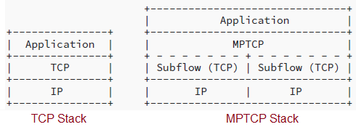1-Wire vs. I2C: Interface Protocol Differences Explained
Explore the differences between 1-wire and I2C (2-wire) protocols. Understand their pros, cons, and applications to choose the right interface.
Showing 25 posts (Page 1 of 2)
Advertisement
Explore the differences between 1-wire and I2C (2-wire) protocols. Understand their pros, cons, and applications to choose the right interface.

Explore 5-10 key advantages and disadvantages of FTP (File Transfer Protocol) compared to modern alternatives in networking for data communication.
Explore the key similarities and differences between 100Base-T1 and 1000Base-T1 Ethernet bus technologies used in the automotive sector, focusing on data rates, standards, and applications.

Understand the AMQP architecture: publishers, subscribers, broker roles, exchanges, queues, and frame types for asynchronous messaging.
Explore a detailed comparison of AMQP and JMS protocols, highlighting their features, message formats, models, and key differences for messaging systems.
Explore the distinctions between asynchronous protocols, using start/stop bits, and synchronous protocols, employing SYN characters, with examples like Xmodem and Bisync.

Explore Automatic Speech Recognition (ASR) systems: how they work, their benefits like cost reduction and accessibility, and the protocols they use for converting spoken language into text.

Discover A2B (Automotive Audio Bus) protocol basic features and explore advantages and disadvantages of A2B Protocol.
Explore the distinctions between CAN and TTCAN, focusing on messaging, synchronization, applications, and more. Understand which is suitable for your needs.
Learn CAN XL protocol used in automotive domain and explore benefits or advantages of CAN XL Protocol.

Explore the key differences between CoAP and HTTP protocols, focusing on their design, use cases, and technical implementations for IoT and web applications.

Compare HTTP over TCP vs QUIC (Quick UDP Internet Connections) and explore difference between TCP and QUIC protocols and their advantages & disadvantages.Touch upon features of Multipath QUIC protocol under development.

Compare TCP vs MPTCP (Multipath TCP) and explore difference between TCP and MPTCP protocol used in ATSSS under 5G Advanced.
Learn about DoIP (Diagnostic Communication over Internet Protocol), its benefits, and how it surpasses older diagnostic protocols like CAN and K-line in automotive diagnostics.

Explore the FlexRay protocol, comparing its advantages and disadvantages to CAN, covering features, benefits, drawbacks, and applications.
Explore the distinctions between FTPS and SFTP protocols, including security, port usage, encryption, and compatibility.
Understand HART communication protocol basics and explore advantages and disadvantages of HART protocol.

Explore the differences between HTTP1.1 and HTTP2 protocols, including multiplexing, server push, header compression, and performance implications.

Explore IP PBX systems: components like media servers and gateways, PSTN connectivity, IP phone features, and key manufacturers.
Overview of K-Line protocol, its frame format, and commonly used testing tools in automotive systems for communication and diagnostics.
Explore the K-Line protocol, its benefits for automotive communication, including simplicity and reliability, and its drawbacks like low data rates.
Explore the comparison of K-line and L-line bus protocols in automotive diagnostics, highlighting their key differences, similarities, and interface details.

Learn about the Modbus message format, including ASCII and RTU modes, crucial for understanding industrial automation protocol implementation.

Learn Modbus protocol, its master slave architecture, difference between transmission modes (ASCII/RTU), message framing, and the role of Hart to Modbus converters.

Explore the key differences between MQTT and REST protocols, including architecture, message types, and application suitability.
Advertisement